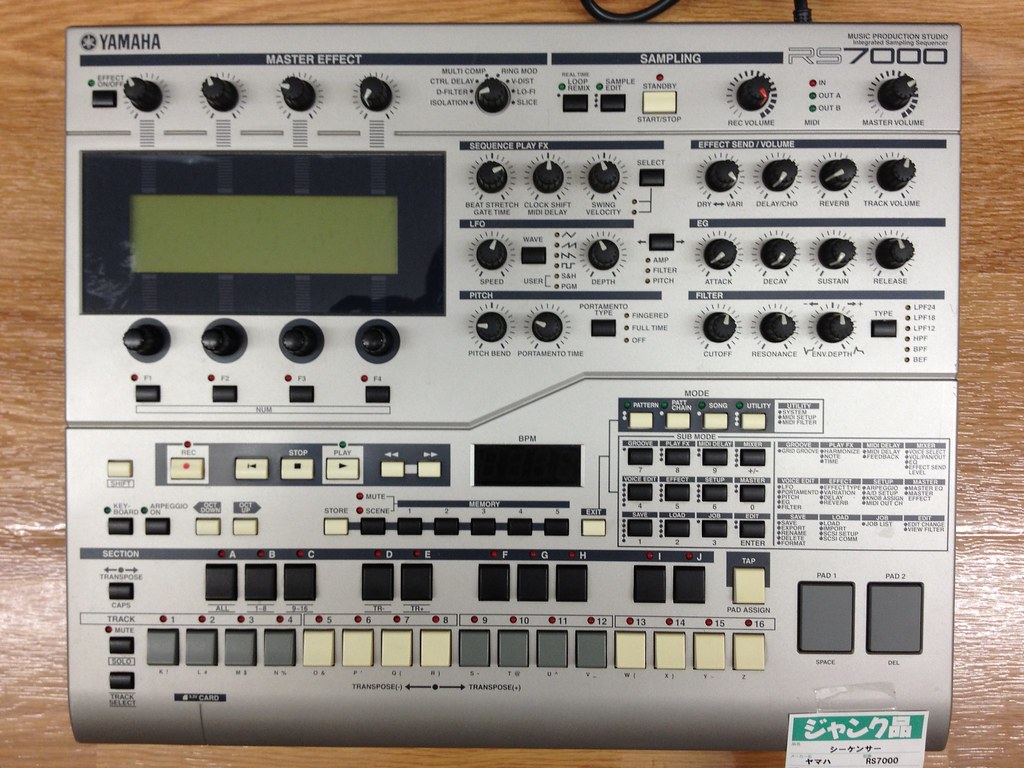Are you tired of spending endless hours tinkering with your music production software? Do you feel like you’re not making progress, no matter how much time you put in? If so, it’s time to switch to a Mac. In this comprehensive guide, we’ll show you how to streamline your music production process using the power of a Mac. From optimizing your workflow to mastering the latest software tools, we’ve got everything you need to know to take your music production game to the next level. So sit back, grab a cup of coffee, and get ready to unlock the full potential of your creativity with our efficient music production guide for Mac.
Table of Contents
Introduction: Why Mac is the Ultimate Choice for Music Production
Mac has been the go-to choice for music production for decades. Its superior hardware and software integration, combined with a sleek design, make it the ultimate choice for music producers. Mac’s operating system, macOS, is optimized for audio processing, making it more stable and reliable than other operating systems. Additionally, Mac’s built-in audio interface provides high-quality sound without the need for external hardware. This means that you can start producing music right out of the box. With its powerful processors and ample storage space, Mac can handle even the most demanding music production tasks with ease. Whether you’re a beginner or a seasoned professional, Mac is the perfect platform to unleash your creativity and take your music production to the next level.

Setting Up Your Mac for Music Production: Tips and Tricks
Whether you’re a seasoned music producer or just starting out, setting up your Mac for optimal performance is crucial. One important thing to consider is your computer’s storage capacity and speed. Investing in an external hard drive for storing large audio files can free up space on your Mac and improve processing speed. It’s also essential to keep your operating system and DAW (digital audio workstation) software updated to ensure continued compatibility.
Another key factor in optimizing your Mac for music production is managing background processes that can slow down your system. Disabling unnecessary applications and services while working on time-sensitive projects can prevent interruptions and increase productivity.
Finally, investing in quality hardware such as a high-performance processor, ample RAM, and good-quality headphones or speakers will ultimately result in better-sounding productions. By taking the time to set up your Mac properly, you’ll be able to produce music more efficiently while achieving professional-level results.
Must-Have Plugins and Software for Music Production on Mac
Plugins and software are essential tools for any music producer, especially when working with a Mac. The right combination of plugins can take your music production to the next level. One crucial plugin is the virtual instrument which allows you to create sounds from scratch or add realistic instrumental recordings to your tracks. Logic Pro X comes with a suite of high-quality virtual instruments, including synthesizers, drum machines, pianos and orchestral sounds.
Another important piece of software for Mac-based producers is mixing and mastering plugins like Ozone 9 by iZotope or FabFilter Pro-Q3. These can help polish up your mixes and give them that professional sound quality you desire.
In addition to these two vital types of plugins, there are plenty more worth exploring such as effect processors like distortion pedals and reverb units that can help create unique sonic landscapes in your productions. The options are endless, so be sure to experiment until you find what works best for your style of music!

Optimizing Your Workflow: How to Streamline Your Music Production Process on Mac
Efficiency is key when it comes to music production, and optimizing your workflow can make all the difference. One important tool for improving workflow is keyboard shortcuts. Take the time to learn shortcuts for frequently used commands in your DAW, and consider customizing them if needed. Another way to streamline your process is by organizing your files properly. Label your tracks clearly and use color coding or grouping tools to keep everything organized.
Using templates can also save a lot of time in the long run, as you won’t have to start from scratch every time you begin a new project. Save a template with all the effects chains and instruments you typically use so that they are ready at the click of a button.
Finally, don’t forget about backups! Back up all of your work regularly using an external hard drive or cloud storage service. This will protect against loss due to hardware failure or other unexpected issues.
By implementing these tips into your music production process on Mac, you’ll be able to achieve maximum efficiency while creating high-quality tracks.

Collaborating with Other Musicians on Mac: Best Practices and Tools
Collaborating with other musicians is an essential part of music production. Fortunately, Mac offers a variety of tools and best practices to make this process seamless. One important tool is GarageBand, which allows you to easily share projects with other GarageBand users and even collaborate in real-time. Another useful tool is Logic Pro X’s project sharing feature, which allows multiple users to work on the same project simultaneously.
When collaborating with others, it’s important to establish clear communication and expectations from the beginning. Set deadlines, discuss roles and responsibilities, and make sure everyone is on the same page. Utilize cloud-based storage services like Dropbox or Google Drive to easily share files and keep everyone updated on progress.
Finally, consider using online collaboration platforms like Splice or Blend.io to connect with other musicians and producers from around the world. These platforms allow you to share projects, give feedback, and even monetize your collaborations. With these tools and best practices, collaborating with other musicians on Mac has never been easier.

Troubleshooting Common Issues in Music Production on Mac
Optimizing Your Mac for Music Production: Common Performance Issues and Solutions
When it comes to music production on Mac, there are some common performance issues that can arise. One of the most important things you can do is optimize your Mac for music production. This means closing unnecessary applications, disabling visual effects, and freeing up disk space. Another common issue is latency, which can cause a delay between when you play a note and when you hear it through your speakers. To fix this, try increasing your buffer size or using an external audio interface. Finally, if you’re experiencing crashes or freezes, make sure your software is up to date and consider resetting your PRAM or SMC.
Dealing with Audio Latency and Buffer Size in Mac-based Music Production
Audio latency and buffer size are common issues that music producers face when working on a Mac. Audio latency refers to the delay between the time when a sound is produced and when it is heard, while buffer size determines how much audio data is processed at a time. To minimize audio latency, it’s important to use an audio interface with low latency drivers and adjust the buffer size accordingly. Increasing the buffer size can reduce the risk of audio dropouts, but it also increases latency. Finding the right balance between these two factors is crucial for achieving optimal performance in music production on a Mac.
Solving Plugin Compatibility Issues in Logic Pro X and Other DAWs on Mac
One common issue that music producers encounter on Mac is plugin compatibility issues when using Logic Pro X and other DAWs. This can be frustrating and time-consuming, but there are several ways to solve this problem. First, make sure your plugins are up-to-date with the latest versions. Second, check if the plugin manufacturer has provided any specific installation instructions for Mac users. Third, try running your DAW in 32-bit mode as some plugins may not work correctly in 64-bit mode. Fourth, consider using a plugin wrapper like “Blue Cat’s PatchWork” to host incompatible plugins within a compatible environment. By taking these steps, you can overcome plugin compatibility issues and keep producing quality music on your Mac without interruption!
Fixing Common Audio Interface Problems on Mac: Tips and Tricks
If you’re experiencing audio interface problems on your Mac during music production, there are a few things you can try to fix the issue. First, make sure your audio interface is properly connected and recognized by your Mac. Check the manufacturer’s website for any driver updates or compatibility issues with your operating system. You can also try resetting your audio preferences in your DAW or system preferences. Another common issue is latency, which can be improved by adjusting buffer sizes or using a dedicated audio interface with low latency. By troubleshooting these common issues, you can ensure smooth and efficient music production on your Mac.

Conclusion: Achieving Efficient Music Production with Your Mac
Achieving efficient music production on your Mac is not only possible but also highly achievable. By following the tips and tricks outlined in this guide, you can optimize your workflow, choose the right software and plugins, and collaborate seamlessly with other musicians. Remember to always keep your Mac optimized for music production by regularly updating your software and hardware. Don’t be afraid to experiment with different techniques and tools to find what works best for you. And when troubleshooting common issues, don’t hesitate to reach out to online communities or support forums for help. With the right mindset and tools, you can achieve great success in music production on your Mac.
In conclusion, Mac is the ultimate choice for music production. With its powerful hardware and intuitive software, it provides an unparalleled experience for musicians and producers alike. By following the tips and tricks outlined in this comprehensive guide, you can optimize your workflow, choose the right DAW and plugins, master audio, collaborate with other musicians, and troubleshoot common issues. With a little practice and patience, you can achieve efficient music production with your Mac.
If you found this article helpful, be sure to check out our other content on music production. We have a wealth of resources available to help you take your music to the next level. Thank you for reading!
FAQs
Q. Who makes the best music production software for Mac?
A. Logic Pro X is widely considered the best music production software for Mac.
Q. What do I need to start music production on a Mac?
A. You’ll need a Mac computer, music production software, and possibly a MIDI controller.
Q. How do I improve the sound quality of my Mac-produced music?
A. Use high-quality audio samples, invest in good speakers/headphones, and learn proper mixing techniques.
Q. Who can benefit from music production software for Mac?
A. Anyone interested in making music, from hobbyists to professional producers, can benefit from music production software for Mac.
Q. What is the learning curve for music production software on Mac?
A. The learning curve can be steep, but with practice and dedication, anyone can become proficient in music production on a Mac.
Q. But isn’t music production on a Mac expensive?
A. While some software can be pricey, there are affordable options available, and many offer free trial periods for users to test out.


